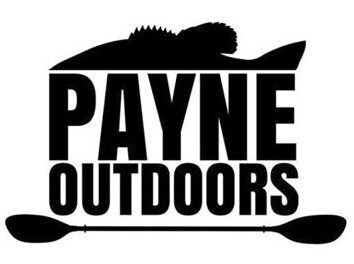From the time I was little, I remember hearing that bass (large and smallmouth, not the white ones) are for catching and catfish are for eating. The only bass kept around our house was a large one that died and was skin mounted back in the late 80’s. We caught lots of bass growing up. We would take pictures and then release them to make more babies for years to come. That’s the essence of Catch, Photograph and Release.
Almost all freshwater kayak tournaments are done this way. Some saltwater tournaments are but I want to focus on freshwater today. Specifically I want to zero in on largemouth and smallmouth CPR.
Catch and release is a noble thought. Your prey gives you entertainment, you see value in that and want the fun to continue in the future so you let it free to fight another day. Sounds kind of like the Roman Emperor in Gladiator letting Maximus live. We build tournaments around this idea too. It is noble but is it harmful?
First let’s look at some official wildlife science documents.
The Tennessee Wildlife Resources Agency put together a book for ponds and small lakes to discuss many aspects of maintaining a healthy population balance. A quote that jumped out at me very quickly was, “Fish must be harvested regularly for the population to remain in balance.” More to the point it says, “The best way to avoid overcrowding in a pond is to harvest fish regularly and in adequate numbers.”
That’s all well and good. But what about lakes? Does this apply to lakes? Don’t people already harvest these bass?
It isn’t that simple says Dr. Mike S. Allen from the Department of Fisheries and Sciences at the University of Florida. Allen shares in a paper, “…size limits are a tool for fisheries managers and have the potential to improve catch of large fish and total harvest. However, size limits will not improve every population! Fishery managers in Florida use specific regulations to improve fisheries that have rapid growth and good recruitment, such as the 15-24 inch slot limit on bass at Lake Istokpoga. Conversely, other fisheries with slow or moderate growth are often managed with more liberal size limits to allow anglers to harvest slower growing fish. The potential for success depends on … each population!“
So what should we do as tournament fishermen?
If a fish population seems skinny and long, should we change our format for that lake to a harvest format? Should we use stringers?
Debra Dean, Editor of Honey Hole Magazine, has some thoughts she shares on the subject. She writes, “The art of catch and release could be on the verge of be coming the next big concern of fishery managers and biologists. It’s actually already been under scrutiny for some time because keep-and-eat is what’s supposedly missing from “workable” slot limits. Fisheries biologists claim that the only way slot limits really work for any lake is for small fish, those under the slot, to be retained in larger numbers than what is currently in style with bass fishing society (which is practically none).
But they were inclined to support and promote catch and release as part of their fisheries plans and perhaps had hoped to strike some kind of balance between live release and a visit to the table, for bass in particular. No one realized that catch and release would become THE THING TO DO, almost a religious experience, for bass anglers and that such a noble ethic could become a problem for fisheries management.“
2 thoughts on “Is Catch and Release Hurting Our Lakes?”
Comments are closed.


Depends on the lake, size, forage. I fish a pond near my family's house in VA and can catch 50 12 inch bass a day but in 4 years the I only caught one over 3 pounds that was almost 8#. It needs to have smaller bass harvested, but most of the people that fish there are inclined to take bigger ones. 2 people have mounted bass from it and are both dead now. Hmm.
I don't feel the same about bigger lakes, but I think it depends on forage. When I say forage, is there enough food to fatten the bass? When I'm looking at places to fish in VA near my parents house several of the biologist reports say that the lakes should be harvested because of the large amount of smaller bass and lack of bigger bass.
VIP adventures in SC never gets harvested from what the owner told me and some of those lakes are over 30 years old. They are full of healthy big fat bass. Why is this? The owner wasn't even sure, but there is a lot of food to go around in those lakes.
Personally I don't harvest bass because I don't like to eat them. Blue gill, perch and trout on the other hand are dinner.
The whole point of slot length limits is to encourage harvest to shift the size structure of the population to what the biologists imposing the limit feel is more ideal. Particularly harvest of fish under the slot. Slot limits are used because there is too much harvest or mortality of fish when they get to the size range that the slot is protecting and too many fish present just below the slot.
I don't think kayak tournaments need to have fish frys at this point, it would probably be bad PR. What we do need to do is help explain to the average fisherman the value of slot limits and encourage them to take fish home to eat.